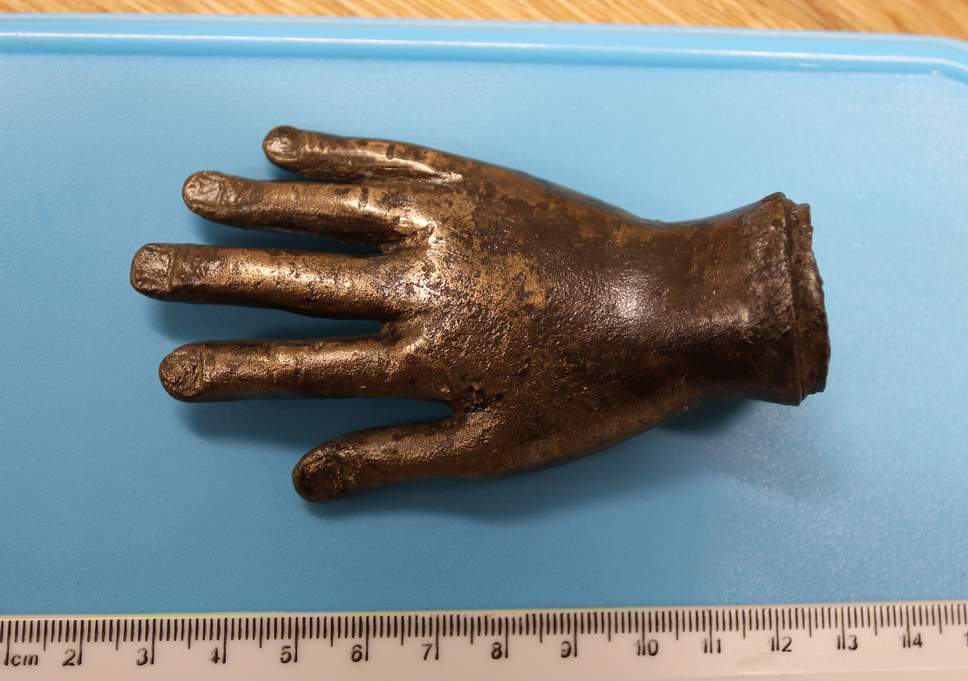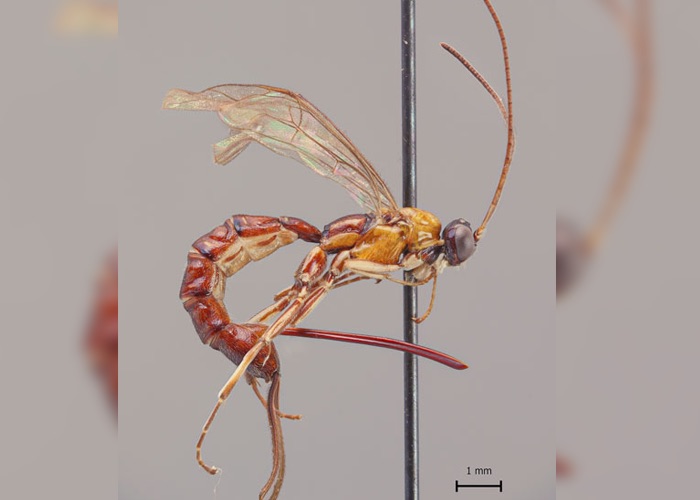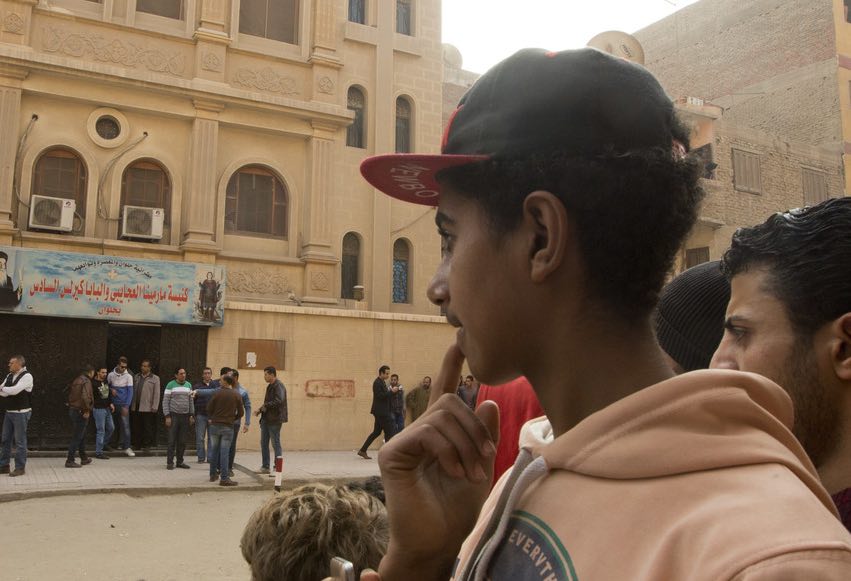
Roman Hand Of God discovered near Hadrian’s Wall sheds light on one of the bloodiest battles ever in Britain.
The hand – unearthed near Hadrian’s Wall and made of 2.3 kilos of solid bronze – was almost certainly a gift to a military deity for giving the Romans victory in the largest military combat operation ever carried out in Britain, before or since.
The operation – a relatively little-known Roman invasion of Scotland in 209-210 AD – was also probably one of the bloodiest events in British history.
It involved a 50,000 strong Roman invasion force, elements of which penetrated as far north as Aberdeenshire. It’s likely that thousands of tribespeople in what is now Scotland (mainly from the Caledonian and Maeatae tribal confederations) were killed.
The Romans claimed that the native chieftains had reneged on a peace agreement – and were therefore rebels, not just ordinary enemies. It is likely that the sacred bronze hand was ritually buried by one of the Roman commanders who had taken part in the conflict.
Rome’s indignation (feigned or real), over the natives reneging on the peace agreement, was particularly acute because the 50,000 strong invasion had been led by none other than the reigning emperor himself – an ex-general called Septimius Severus. His personal political credibility was therefore very much at stake. The war, associated with the newly discovered bronze “hand of god”, was therefore a particularly bitter one.
To evoke the anger apparently felt by the Romans, a famous Roman writer of the time, Cassius Dio, when writing his account of the conflict, put a particularly bloodcurdling speech (borrowed from the Iliad – the epic ancient Greek tale of the Trojan War, traditionally ascribed to Homer) into the mouth of the Emperor.
In Dio’s account, the borrowed speech instructs the Roman army to annihilate the Scottish tribes. “We are not going to leave a single one of them alive, down to the babies in their mothers’ wombs – not even they must live. The whole people must be wiped out of existence, with none to shed a tear for them, leaving no trace.”
Although the Emperor almost certainly never made such a speech, it was nevertheless a literary device used by Dio to describe the vengeful fury that he arguably believed or knew that the Emperor felt towards the ‘rebellious’ Caledonian and Maeatae tribes.
This anger would have been particularly substantial because Roman casualties had been extremely high.
Certainly the parallels for extreme Roman violence towards perceived rebels (for example the mass executions of Spartacus’ rebel slaves in 71 BC and of Jewish rebels in 70 AD) would suggest that the bloodcurdling flavour of Dio’s description of the emperor’s purported speech to his troops may not have been too far off the mark.
The bronze hand, which had been deposited in a ritually significant boggy area of land adjacent to a Roman fort at Vindolanda on Hadrian’s Wall in Northumberland shortly after the end of the conflict, was associated with a Roman god of Middle Eastern origin called Jupiter Dolichenus (originally a local Syrian version of the Roman king of the gods, Jupiter).
This specific version of Jupiter was particularly beloved by the Roman military. His bronze hand was often mounted on the top of a pole – and used to bless or sanctify his followers during religious rituals inside his temples.
It had been deposited in a small bog almost certainly as part of a religious ritual to mark the completion of a temple dedicated to the god just 15m away.
The cult must have been particularly important to the regiment based at Vindolanda or its commander – because the temple was very unusually built inside the fort. It is the only example of such a phenomenon known from anywhere in the Roman empire.
The regiment based there was a Gaulish (French) originating unit of auxiliary infantry and cavalry – known as the fourth cohort of Gauls.
Its commanding officer, a wealthy upper-class Roman called Sulpicius Pudens (potentially the one in post when the temple was constructed and the bronze hand deposited) appears to have been a particularly devoted follower of the cult. He personally funded one of the two main altars inside the Vindolanda Fort temple and another altar (probably also associated with Jupiter Dolichenus) at a nearby sulphur spring.
The unique decision (possibly by Sulpicius Pudens himself) to build the temple inside the fort and the associated ritual deposition of the god’s bronze hand – both immediately following the end of the largest military combat operation ever to take place in Britain – was almost certainly not a coincidence.













